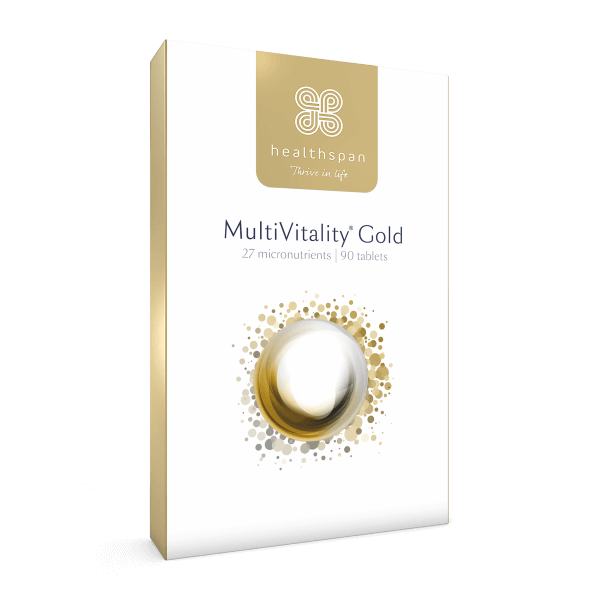DRV, RDA, NRV or RNI? Nutritionist Sarah Dumont-Gale explains the confusing terminology surrounding dietary recommendations and nutrient intakes.
🕒 6 min read
A balanced diet is one that includes protein, carbohydrate, fat, fibre, vitamins, minerals and water. Every one of these nutrients is required by the human body to function, but exactly how much do we need of each for good health?
Several committees and authorities have defined various nutrient and energy criteria as a guide for the general population as to what to consume daily to maintain health and prevent deficiency.
The nutrient and energy criteria are often shortened to acronyms such as DRV or RDA, and it can be confusing knowing what figures are relevant to you, especially as many of the terms have been superseded by updated ones. This article will clear up some of the confusion around the various nutritional acronyms to help you reach your nutritional goals.
What are Dietary Reference Values (DRVs)?
Dietary Reference Values are estimates of the energy and nutritional requirements of different groups of healthy people in the UK population.1 There are different DRVs for different ages and genders, plus separate advice for pregnant and breastfeeding women.
DRVs, which were decided using advice from the Committee on Medical Aspects of Food and Nutrition Policy (COMA – now the Scientific Advisory Committee on Nutrition or SACN) are not recommendations or goals, simply the estimated requirement of a particular population group to prevent deficiency and stay healthy.
DRVs can be split out to include Estimated Average Requirements (EARs), Reference Nutrient Intakes (RNIs), Lower Reference Nutrient Intakes (LRNIs) and Safe Intake (SI).1

Dietary Reference Values are different for different ages and genders – and there is separate advice for pregnant and breastfeeding women.
Estimated Average Requirements: EAR
EARs define the average energy and nutrient requirements of a population group. This means that approximately 50 per cent of a group will require less and 50 per cent will require more.1
The EARs for energy requirements were updated by SACN in 2011 due to levels of obesity rising rapidly in the UK.
Reference Nutrient Intakes: RNI
RNI is the amount of a nutrient required for 97.5 per cent of the population to be healthy. Generally, the RNI should be used when assessing the dietary intake of a population group, as the nearer the average intake of the group is to the RNI, the less likely it is that any individual will be deficient.
Lower Reference Nutrient Intake: LRNI
LRNI is defined as the amount needed by 2.5 per cent of the population to be healthy or the level at which most people (97.5 per cent) will be deficient.
Safe intake: SI
For some nutrients, there isn't sufficient evidence to determine the EAR, RNI or LRNI and thus a safe intake (SI) is set. The SI is the amount judged to be a level or range at which there is no risk of deficiency, as well as being below the level where there is a risk of undesirable effects.1
The adequate intake (AI) can be used interchangeably with SI.
What about Reference Intakes (RIs)?
Reference Intakes, which have replaced Guideline Daily Amounts (GDAs), are a guideline for the amount of energy and key nutrients that should be eaten each day in order to maintain a healthy diet.
RIs have been set for calories, protein, carbohydrate, sugars, fat, saturated fat, fibre and salt, and while on food packaging it is labelled as 'adult reference intake', RIs are actually based on requirements for an average female adult.
RIs are not targets, but a guideline or benchmark to help advise the maximum number of calories or amount of key nutrients to consume in a day. They help to guide healthy dietary choices and provide a framework to consume a balanced daily intake.
Personalised requirements will vary depending on age, gender and level of physical activity. There is currently no RI that can be used specifically for children.
Where do Nutrient Reference Values (NRVs) fit in?
Nutrient Reference Values (NRVs) are set for vitamins and minerals for the purpose of food labelling based on food legislation. NRVs used to be known as Recommended Daily Allowance (RDA), and although the name has changed, the values have stayed the same.
NRVs are the level of a nutrient that is considered adequate to meet the nutritional requirements of an average healthy adult to prevent deficiency. There is only one NRV for each nutrient. Food supplement labels list the quantity of a nutrient alongside the percentage of the NRV value: for example, 80mg vitamin C provides 100% NRV.
The US has its own version of the NRVs called the Daily Value (DV). Different criteria were used to define NRVs and DVs, which is why you will see a difference between the NRVs and US DVs. For example, the NRV for vitamin D is 5mcg, whereas in the US the DV is 20mcg.
What are Safe Upper Limits?
The Safe Upper Limit (SUL), as set by The Expert Group on Vitamins and Minerals (EVM), defines an intake of vitamins and minerals that can be consumed daily over a lifetime without significant risk to health on the basis of the available evidence.
The levels have been set so the consumer can feel confident that no harm should occur from daily intake up to that level. The EVM has set SULs for eight vitamins and minerals, and guidance was issued for 22.2
The European Food Safety Authority (EFSA) has also provided guidance on safe intake levels known as Tolerable Upper Intake Levels (UL). The UL is defined as the maximum level of long-term daily intake of a nutrient, from all sources, judged unlikely to cause adverse health effects in the general population.

MultiVitality Gold
One-a-day health support
- The whole spectrum of vitamins and minerals in one tablet
- Suitable for vegetarians and vegans
- Protect yourself from nutritional deficiencies for just 10p a day
As defined by the EFSA, the definition of a tolerable intake refers to what can be physiologically tolerated by the human body, and is a scientific judgement based on the probability of an adverse effect occurring at a specified level of exposure.3
Both the SUL and UL are not recommended levels of intake, but are instead an estimate of the highest level of intake that carries no appreciable risk of adverse health effects.
Diet and supplements
It can be tricky to know exactly what to eat and what to supplement to comply with the different nutrient and energy criteria set. This article is a useful resource to understand how a balanced diet can be achieved, while in another article nutritionist Rob Hobson pinpoints dietary improvements that we could make as a nation.
It is also possible to track and analyse your own diet using a dietary tracker tool, which provides a report on calorie, macronutrient and micronutrient intake.
What's more, Healthspan supplements are formulated to take into account the fact that individuals may use more than one product, so we take care to consider the dose used in our formulations to help avoid reaching the SUL or UL.
However, if you are taking multiple supplements it is always important to check that you are not exceeding the SUL or UL as set by the EVM and EFSA respectively. This can be done by following the reference links provided in the body of this article or by clicking the references link below.







